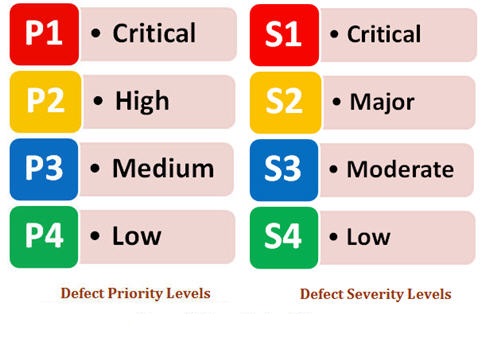How to set Severity and Priority for a bug?
Severity and Priority, these are often a confused concepts and are almost used interchangeably amongst not only test teams but also development teams. There’s a fine line between the two and it’s important to understand that there are indeed differences between the two.
Severity: Severity determines the defect’s effect on the application. Severity is given by Testers.
“Severity” defined as – The degree of something undesirable, something hard to endure, extreme plainness. Severity of a defect/bug tells us how undesirable the defect is. For example, a bug that causes the program to crash and terminate would be considered as high severity, while a minor spelling error might be of low severity.
Priority: Determines the defect urgency of repair.Priority is given by Test lead or project manager. “Priority” as – Status established in order of importance or urgency. Priority of a defect/bug tells us how soon it is required to fix the problem. Priority reflects a business decision as to how soon that bug should be fixed. Priority of the bug determines what gets fixed next and what does not. The priority of a bug can be decided from either the Project management point of view or from the user’s point of view.
Priority:Define defect priority value by level of urgency to be resolved for the defect.
Priority 1 – Critical (P1):This generally occurs in cases when an entire functionality is blocked and no testing can proceed as a result of this
Priority 2 – High (P2):defects must be resolved in this release.
Priority 3 – Medium (P3):defects would like to be fix, but won’t hold shipment for them.
Priority 4 – Low (P4):defects are not as strong as desirable.
Bugs that can be raised based on above category combinations like for example:
1). High Priority and Major severity
1.2) The application crashes whenever a person attempts to submit valid input on the registration page.
3.2) An application crashes after multiple use of the functionality (For Ex. “Save” button use 200 times then that application will crash.)
4). low severity and low priority
4.1) Any cosmetic or spell issues which is with in a paragraph or in the report (Not on cover page, heading, title).

Best Open Source Business Intelligence Software Helical Insight is Here

